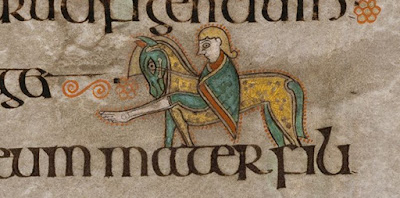Irish Pigs
Pigs Pigs had special prominence in Irish culinary preferences. In some cases, pork seems to have been preferred even over beef (1) , and pigs fattened on acorns and milk were considered the very highest quality. Apart from meat, pigs also provided ivory tusks, bristles, thick leather and dense, strong bones, excellent for carving and tool making. Laws pertaining to pigs and pork in Ireland ranged from guesting laws, requiring specific allotments to the table of hospitality, and fosterage laws specifying amounts of meat for foster children, to damage laws itemizing the fines caused by escaped pigs, or exemptions from liability for the farmer if someone was stupid enough to climb into a sow's nest when she had piglets. Pigs, it seems, were ubiquitous and sometimes dangerous—although there are enough references to pet pigs to demonstrate that raising runts by hand-feeding them milk was common practice, and that the resultant pigs were friendly and followed people around (2) ....
